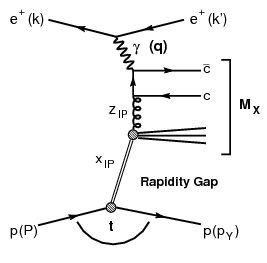
Diffractive Open Charm Production in Deep-Inelastic Scattering and Photoproduction at HERA |
The above paper combines measurements of diffractive open charm production which were obtained with the H1 detector in different kinematic regimes and exploiting different and new measuring techniques. The diffractive event signature is ensured by the reconstruction of a large rapidity gap which separates the hadronic final state into two distinct systems X and Y, where Y contains the elastically scattered proton or a low mass resonant state of it and X is well confined in the central detector of H1. The system X is known as the photon dissociative system. For the measurements it is constraint to contain at least one charmed hadron. The diffractive event signature and the evolved kinematics are visualized in the following picture.

To determine the presence of the charmed hadron two measuring techniques are exploited. In the first method D* mesons are explicitely reconstructed via the golden decay into a kaon and two pions of which one due to kinematical constraints is of very low momentum. This method is used in deep-inelastic scattering (DIS) and photoproduction. In an alternative approach the presence of the charmed hadron is determined indirectly exploiting the characteristic long lifetime of charm (and beauty) flavoured quarks as pioneered for inclusive measurements here (lifetime measurement). This method due to the limited availability of suitable trigger information in the data taking period is restricted to the regime of DIS. It is used to determine the charm contribution to the diffractive structure function F2D .
The measured D* cross sections are compared differentially with NLO calculations in DIS and photoproduction using the diffractive parton densities (DPDF) Fit2006 A and B extracted from the diffractive structure function F2D All calculations a performed in the massive scheme where the charm quark is only produced dynamically via the boson gluon fusion process (BGF). These comparisons are used for a test of QCD factorization in diffraction. In both kinematic regimes all differential distributions are well described by the NLO predictions. As an example the cross section differential in xIP the momentum fraction of the proton that enters the hard scattering is shown in the following for DIS (upper in pale red) and photoproduction (lower in pale blue).
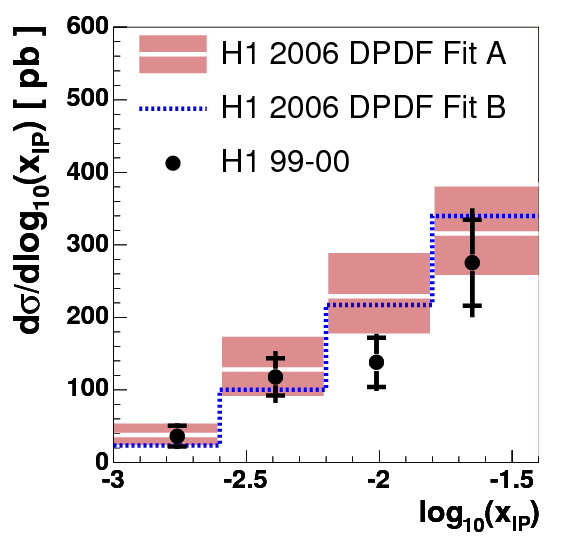
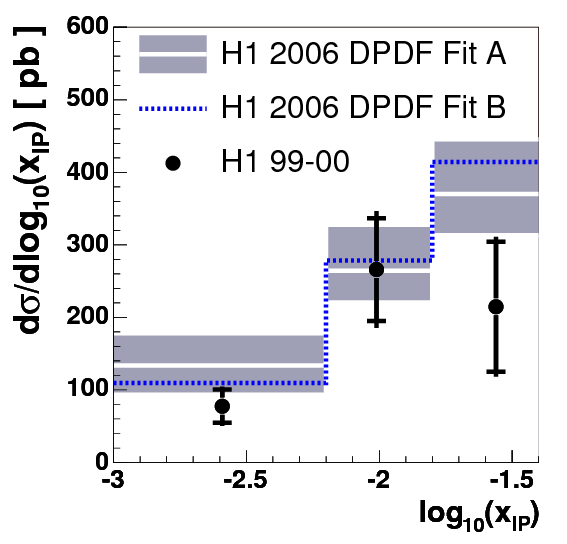
The measurements indicate that QCD factorization is applicable not only in DIS but also in photoproduction.
In DIS the lifetime measurement and the D* measurements are used to determine the charm contribution to the diffractive structure function F2D. The lifetime measurement is especially suited for this purpose due to very small extrapolation factors to the total cross section. The results are directly compared to the to DPDFs of Fit2006 A and B. As shown in the following the data points show a good agreement between the two measuring techniques and with the prediction of the DPDFs.
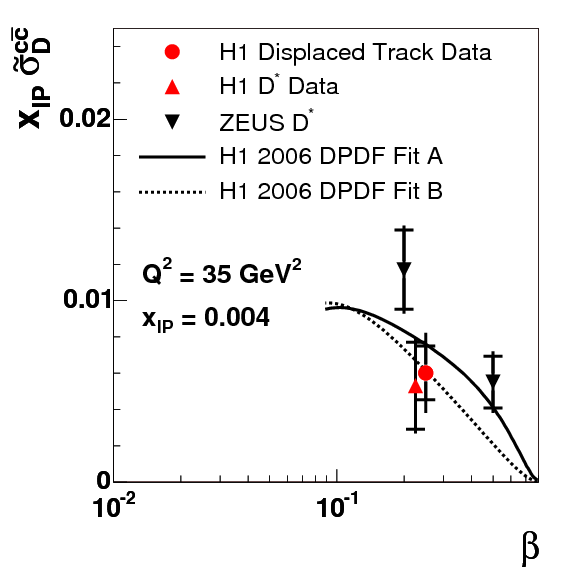
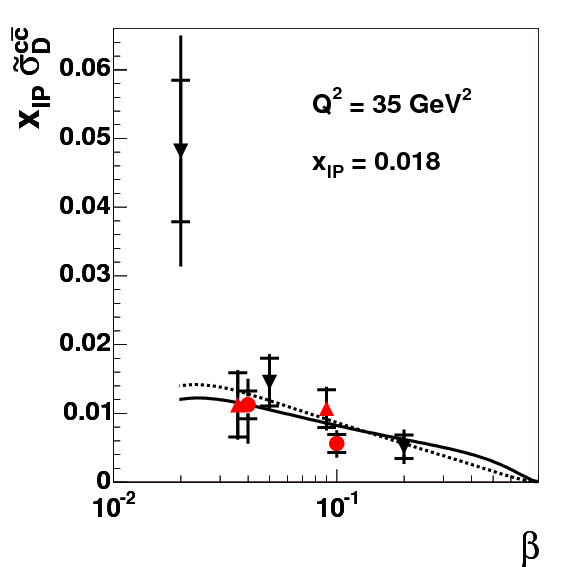
The measurements are also compared to two implementations of the perturbative 2 gluon model in the range of its validity (xIP<0.01). The 2 gluon model explains the diffractive nature of the process by the color neutral exchange of two gluons. It does not rely on the determination of DPDFs but is able to explain diffractive scattering processes using inclusive parton densities.
So what did we learn?
All measurements confirm that QCD Factorization is applicable in DIS and Photoproduction. It has to be pointed out that the statistical significance of the photoproduction measurement does not yet exclude a suppression factor of 0.6 as stated for diffractive 2 jet measurements in photoproduction. Moreover diffractive open charm production in contrary to 2 jet production mainly probes the regime of direct photoproduction rather than resolved processes, where the exchanged photon evolves into a hadronic object before entering the hard scattering process. Thus the ensemble of diffractive open charm production in conjunction with diffractive 2 jet production gives a sensitive testbed for models to describe factorization breaking at the tevatron.